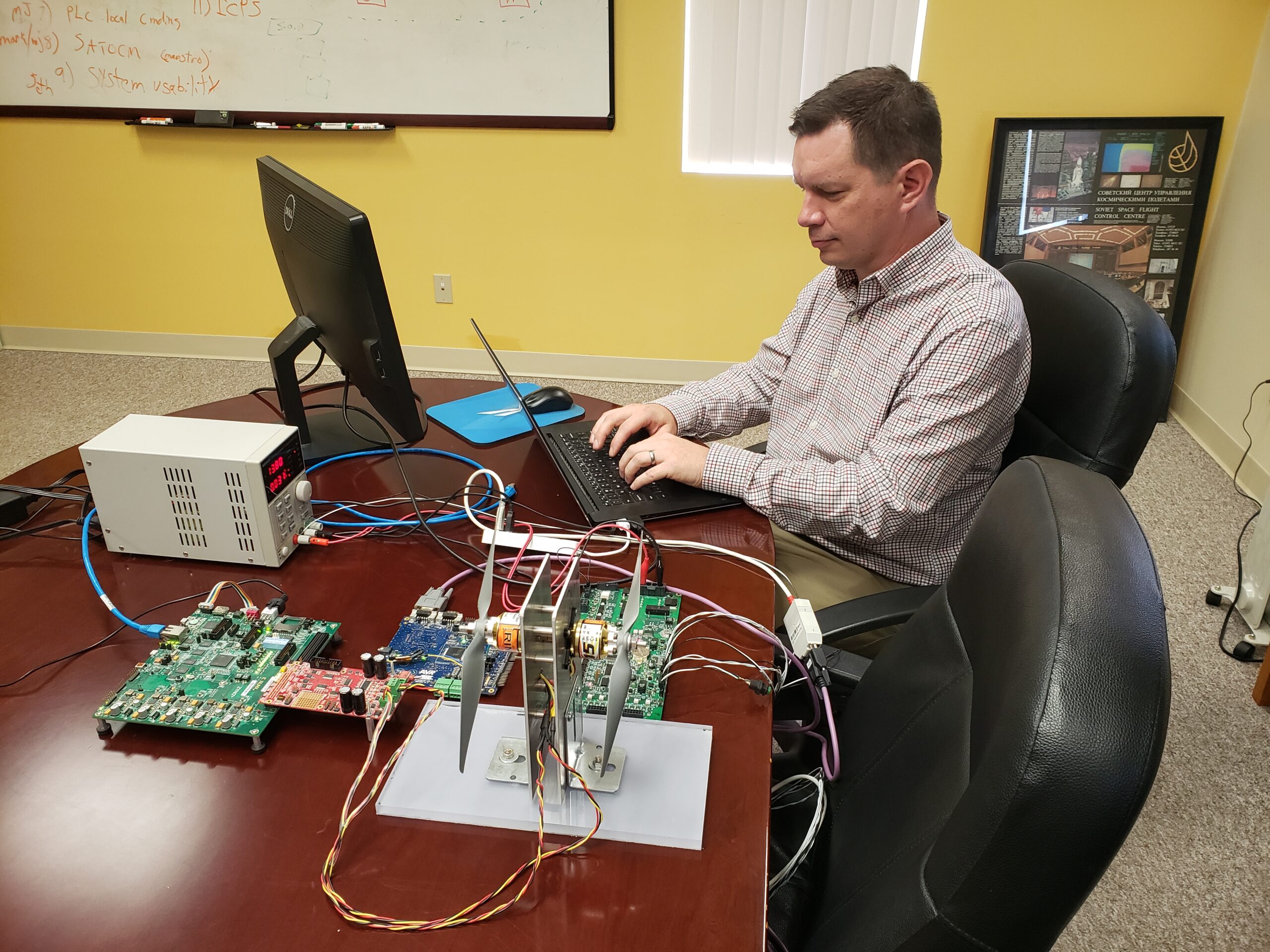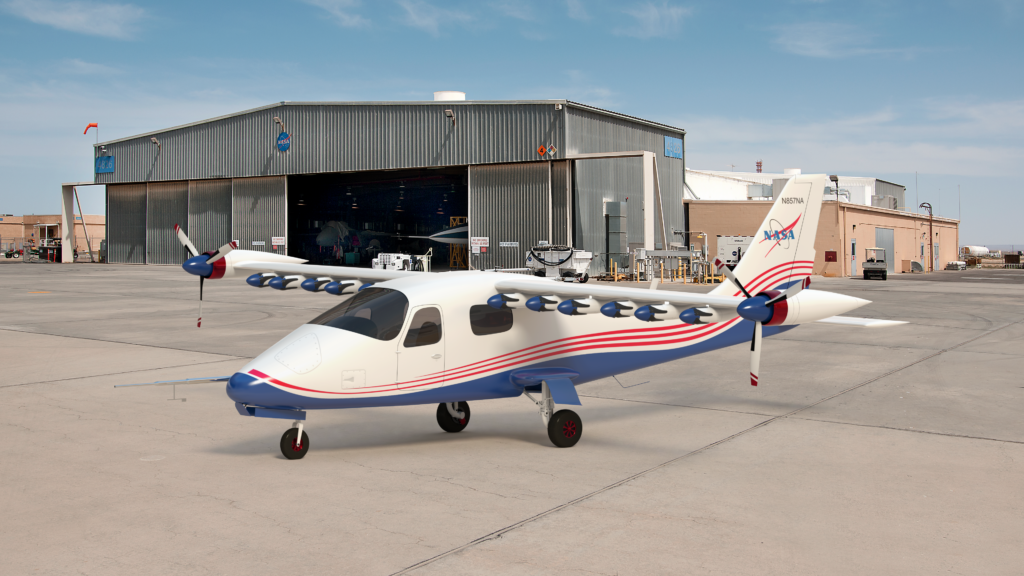FAIRMONT – TMC Technologies of Fairmont is playing a key role in NASA’s development of its first all-electric experimental airplane, the X-57 Maxwell.
TMC Senior Systems Engineer Steve Yokum, of Morgantown, manages the software development and assurance side of the X-57 project.
The X-57 is a small propeller plane, Yokum said during a visit to TMC’s Pleasant Valley office. “They wanted to start with something simple” that is small and light, to support the batteries.
NASA removed the liquid-fueled engines from an Italian Tecnam P2006T and replaced them with electric motors to power the propellers. NASA said it’s “researching ideas that could lead to the development of electric propulsion-powered aircraft, which would be quieter, more efficient and environmentally friendly than today’s commuter aircraft.”
Yokum said he was recruited for the job because he’s been working with the group at NASA’s Armstrong Flight Research Center in California’s Mojave Desert for 20 years. NASA contracts with a lot of lot of small businesses to write software but the X-57 will have a human pilot and puts software verification to higher new level.
No one else knew how to write to NASA manned standards so they brought Yokum in to oversee all software development, he said, writing all design and requirements for the plane’s battery software.
X-57 Principal Investigator Sean Clarke said in TMC’s announcement of the project, “TMC has been highly instrumental in helping bring the software development up to the standards that NASA requires for the flight, which is a ‘win-win-win.” TMC is working with NASA as part of a subcontract with California-based ESAero.
Yoku has been involved with the X-57 for four years, he said. One of his roles, which he considers less significant, was writing the software for what’s called the Traction Contactor Controllers. There is a digital pathway – called a bus in computer terminology – between the batteries and the motor.
They can’t just switch on the batteries and power up the motor – that would push too much current into the motors and burn them out. Yokum’s software controls the powering-up.
Clarke commented, “We’ve used these systems before the TMC testing. But we weren’t able to rely on it. Now that we have the test results from what Steve Yokum has been doing, we can rely on these Traction Contactor Controllers to perform the way they are designed to.”
Yokum’s more significant work, he said, was designing the Battery Monitoring System. The plane has 5,120 AA-sized lithium batteries. “When you get that volume of batteries there’s a big risk.” A battery can get too hot, catch fire, and that propagates to other batteries and can bring the plane down.
“Because you have that volume of batteries, it’s critical to monitor them all constantly,” Yokum said. His system keeps track of the batteries – through 500 temperature sensors – and sends that data to the ground and to the pilot. The pilot can’t conceivably watch all the data for all the batteries, but there’s an alert system to let him know about problems and switch off the batteries if needed.
The Battery Monitoring System also plays a role when the plane is on the ground and the batteries are charging, Yokum said. The batteries have to be charged in the right sequence and they have to do what’s called balancing to keep all the batteries at the same voltage.
Not only is the X-57 NASA’s first all-electric experimental aircraft, NASA said, it is NASA’s first crewed X-plane in two decades.
“We’re really doing this to get this technology out to industry,” Yokum said, so they can start developing their own electric-powered aircraft.
The X-57 will undergo as many as three configurations as an electric aircraft, NASA said, with the final configuration to feature 14 electric motors and propellers – 12 high-lift motors along the leading edge of the wing and two large wingtip cruise motors.
An airplane couldn’t function with 14 liquid-fueled engines, Yokum said. Making them electric allows to design a more efficient wing shape for better flight dynamics.
TMC President and CEO is pleased his company could do this work. “It’s just one of the interesting things we get to do here in West Virginia,” he said.
TMC also engineered West Virginia’s first satellite, STF-1 — Simulation to Flight 1 — a project of NASA’s Fairmont IV&V (Independent Verification and Validation) center. The tiny satellite, a CubeSat, is still orbiting after two years, when the typical life of a CubeSat is three months.
“As people learn about the work Steve is doing, other engineers will want to do that too,” Linger said, and will be attracted to come to West Virginia to work.
TWEET David Beard @dbeardtdp EMAIL dbeard@dominionpost.com





